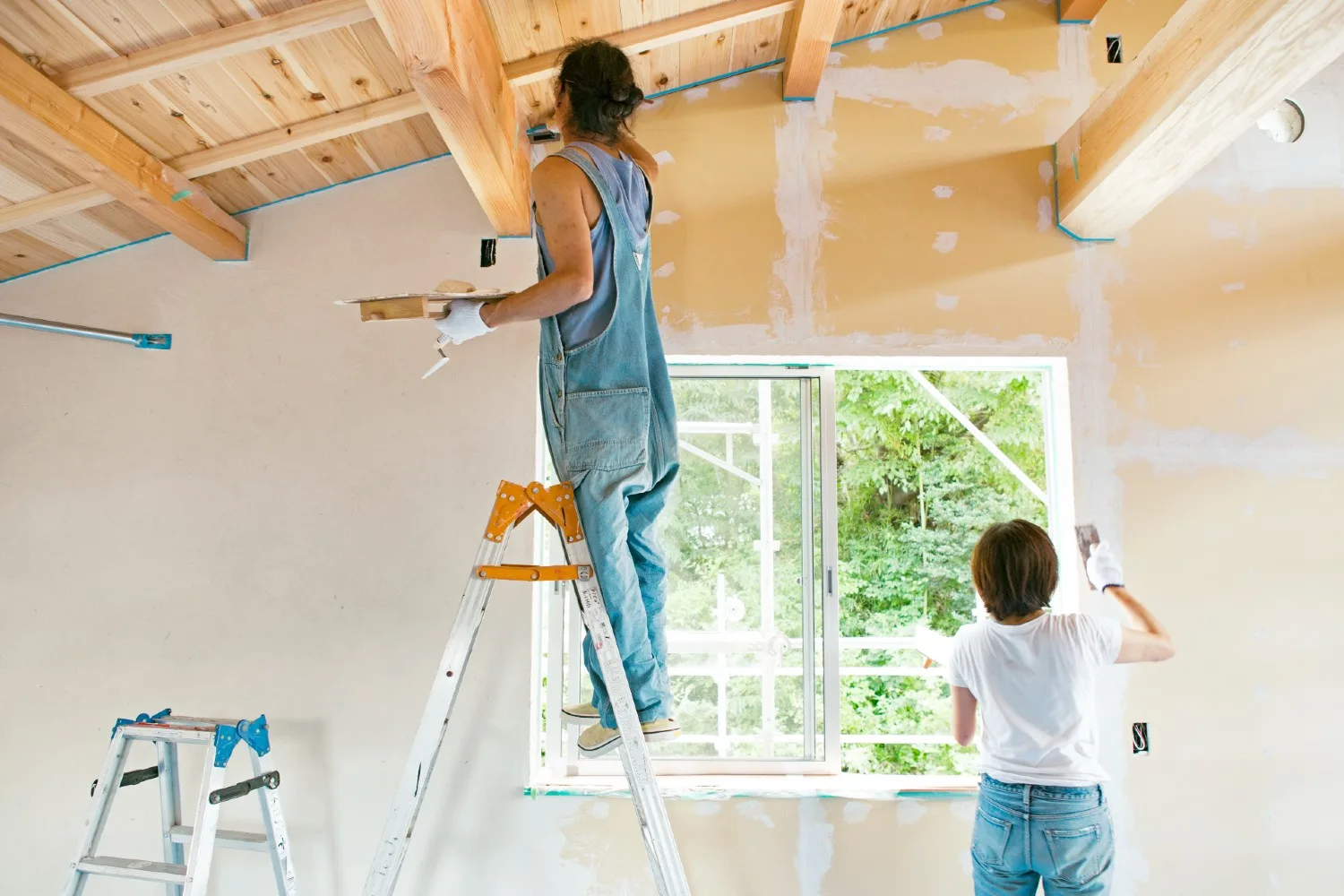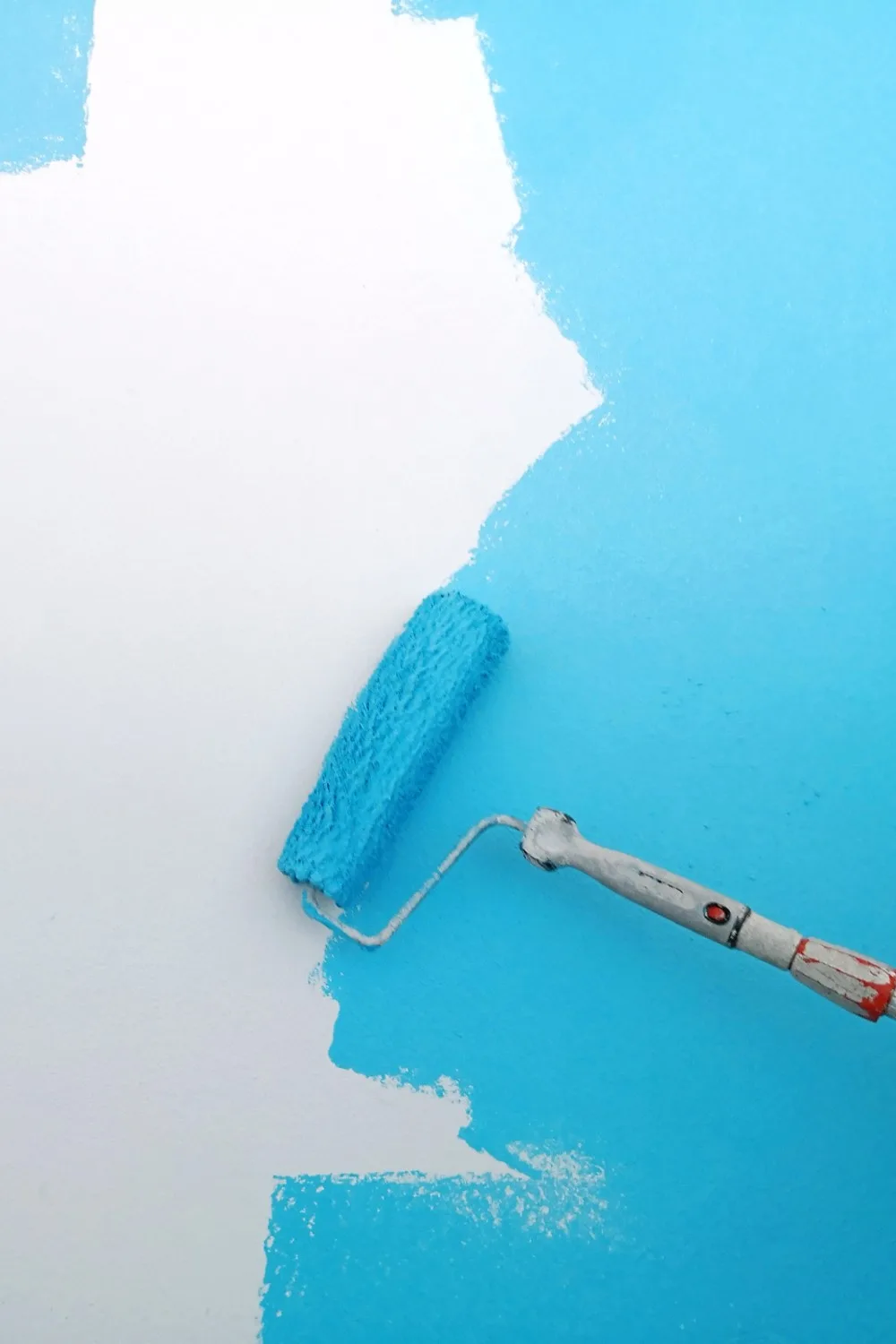If there’s old paint sitting in your shed, you aren’t alone.
Maybe you’re saving it for a rainy day to paint a wall you’ve being meaning to paint. Or perhaps it came with your house, and you think it might come in handy one day.
Watch: Three tips for painting a brick exterior
The truth is that, depending on how old it is, the paint in your shed could contain lead.
Why your old paint could contain lead
Lucinda Curran is an Indoor Environmental Health Consultant. She says, “On 1st October 2021, lead paint was banned in Australia. This means that all domestic paints contain lead, limited to 0.009% = 90 ppm.”
“These levels apply to ‘new paint sold’ and ‘domestic’ paint – so this could mean that the old paint tin in the shed does not meet the standards today.”
Note: if you throw out old paint, ensure it is disposed of responsibly. Find out how here.

How do you know if paint has lead?
While there are no apparent signs your house paint already on your walls contains lead, it helps to know when your house was built.
Lucinda says, “The best guide would be that if your home was constructed or painted before 1997, it is highly likely to contain ‘lead paint’.
“In 1997, in Australia, the lead content of domestic paint was reduced to 0.1% lead (= 1000 ppm lead). Before that, it was much higher.”
While online information says lead was banned in paint in 1970, the Lead Group says it was being phased out, but wasn’t banned.
“In 1991, the Australian NHMRC limit for lead in paint was 0.5% for domestic use, and this figure was lowered to 0.25% in March 1992. In 1997 it was further lowered to 0.1%,” says the website.

When to test for lead in your house paint?
If you’re planning to renovate your home or sand back a wall before repainting, Lucinda says to test the paint for lead.
“I recommend testing paint before any sanding and removing ceiling dust before any renovation,” she says.
“One of the biggest sources of [lead] exposure is ceiling dust – which people can be easily exposed to when renovating.”
While plenty of lead testing kits are available, Lucinda says, “Laboratory analysis is always the best way to go.”

Can you paint over lead paint?
But what if you aren’t sanding your walls or renovating?
“If you aren’t planning on sanding the walls and the paint is in good condition, painting layers of paint with very low levels of lead over it can help to encapsulate it,” says Lucinda.
“Before painting, it is advised to wash the walls with sugar soap, then rinse this off. This thoroughly cleans the walls and prepares them well to contain the leaded paint behind it.”
But that doesn’t mean it won’t cause you problems down the road.
British Paints Technology Team Leader Dr Kelvin Walst says lead can be unlocked down the track as the paint ages.
“While lead containing coatings are undisturbed they are quite safe – the lead remains locked in place,” says Dr Kelvin. “As the paint ages, it might start to wear away. Renovations can unlock the lead – the dust and debris created can be breathed in and contaminate the surrounding environment – either the home’s interior or the surrounding area.”
“If lead is detected, it is recommended to engage professionals to do the job.”
If you are planning on renovating and are worried about lead in your home, the lead group has a helpful renovators’ guide to the dangers of lead.
You might also like:
The paint colour that will increase the colour of your house
5 tips for renovating your bathroom










